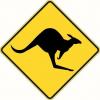
Originally Posted by
Doug Hepler

Thank you, Steven & Tom, very helpful. My question was really just to find out how many used planes in your experience need work on the frog & mouth, or do you just do this as a matter of SOP. I have the idea that many used planes with an intact casting only need the iron to be sharp and the sole to be flat. In other words, I'm asking whether a need to re-seat the frog, etc, is more the exception than the rule. Comment?
Doug
In my experience very little work has been needed on most frog seats. Only one or two needed a little work with a file.
On the face of the frog, mine are usually lapped with the adjusting yoke and the lateral lever removed.
If the cap iron is bending the blade so it isn't resting on the frog, it can be 'adjusted' to not have as much of an effect.
My planes seem to work fine with less cap iron tension.
Of course, YMMV!!!.png
jtk
"A pessimist sees the difficulty in every opportunity; an optimist sees the opportunity in every difficulty."
- Sir Winston Churchill (1874-1965)







 Reply With Quote
Reply With Quote







